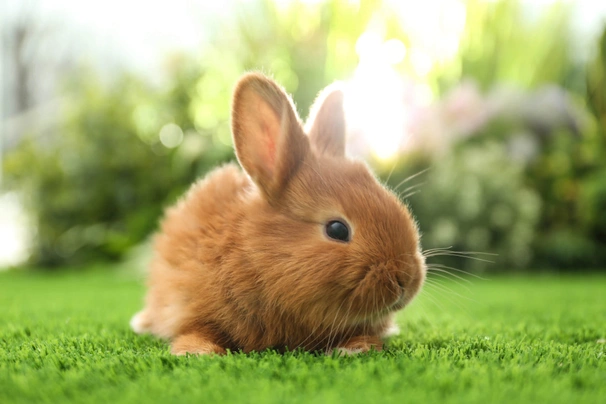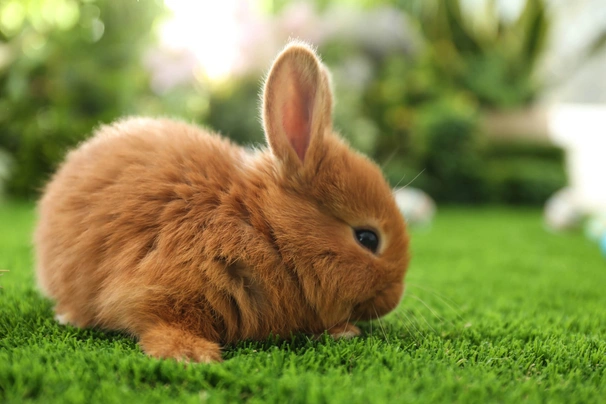Thrianta
Introduction of the Thrianta
The unusually named Thrianta is a stunning red rabbit that has fawn fur under its tail and paws. It was originally developed in the Netherlands where it was named after the ancient name for the Drenthe region, where it originated. It’s thought it was originally bred for the House of Orange-Nassau.
The breed was developed further in Germany and had found its way to the UK by the 1980s, and by the 1990s it had made an appearance across the Atlantic.
The Thrianta has fur that’s scarlet and orange – rather like an Irish setter. It’s an alert rabbit that’s active and intelligent. They are compact and ‘cobby’ with short, upright ears.
History of the Thrianta
Experts believe that the Thrianta was first developed in Holland in the 1930s by schoolteacher H.Andreae, who bred a red-orange rabbit as a tribute to the country’s Royal family, the House of Orange-Nassau. As an ardent royalist, Andreae also planted orange-coloured flowers around his home.
He put together Black & Tans, Havanas and the self-coloured Tortoise Papillon in order to create a red rabbit that he could dedicate to the Royal house. After he helped write the Thrianta standard, the breed was admitted to the Dutch standards in 1940, although at that time the guides required some brown fur in the coat.
World War II took its toll on the breed as the surrender of Holland to Nazi troops meant that many Dutch families had little to eat. This in turn meant that many small animals – rabbits included – ended up in the ovens of the Dutch people and the German soldiers. This had a significant impact on Thrianta numbers and by the end of the war they were virtually extinct.
Many fanciers rallied to prevent the Thrianta from disappearing altogether and many examples in Germany were put to Saxony animals, which eventually created the European Sachsengold. Despite there being a Dutch Thrianta club, most European clubs and associations recognise the Sachsengold, but they don’t recognise the Thrianta.
Appearance of the Thrianta
- Main colourways: red-orange
- Average weight: 5-6lbs
The Thrianta is known as ‘The Fire of the Fancy’ thanks to its rich red colour and thanks to this amazingly rich coat, this is one redhead that is often cited as the most stunning of its kind. The colour of the pelt is deep and carries all the way down the hair shaft to the skin. Slightly lighter colouring is permitted around the eyes, the pads of the feet, the underside and underneath the tail.
Although they are small, the Thrianta is a fancy breed that’s compact and rounded, with a slight arch to the back. Bucks are decidedly masculine looking, whereas does are more slight and feminine in appearance.
Temperament of the Thrianta
The Thrianta makes excellent companion animal thanks to their gentle, inquisitive nature. Because of their size they make a great first rabbits for children and adults who may want to begin breeding. They are not so small as to be frail and delicate, while they are also not too big as to be unmanageable.
If you are looking for your first rabbit it’s worth visiting shows and speaking to breeders about the type that would suit you best. It’s also wise to learn how to handle a rabbit correctly, as even the most docile animal can panic if it’s picked up incorrectly. A struggling rabbit is strong and can cause injury to itself or its handler.
Health of the Thrianta
Dental problems can affect any breed and the Thrianta is no exception. Rodent teeth grow constantly and they must have diet that features lots of fibrous green vegetables and roughage such as hay that will help keep the teeth worn down and prevent overgrown molars and enamel spurs.
Spurs and overgrown molars can cause many other problems including abscesses which can lead to serious complications and if an animal’s teeth are in poor condition it could also affect his ability to eat properly. Owners should check their pet’s teeth regularly – particularly those with smaller rabbits, as smaller, compact heads can exacerbate dental problems.
Any rabbit should be wormed regularly and he should also be treated for fleas and ticks. If you have a female rabbit you should consider spaying in order to prevent uterine cancer, which is common in rabbits.
Care should be taken to prevent your animal falling victim to flystrike. If he is unable to groom himself properly because he’s overweight and if he lives outdoors, flies will be attracted to any areas of fur that are soiled. Flies will lay their eggs in these soiled areas of fur and the emerging maggots can cause damage to skin of the rabbit and leave him with open wounds. It’s important that your rabbit is kept clean and dry and flies are kept away from him and from around his living areas.
Caring for the Thrianta
Rabbits should be fed green, fibrous vegetables like cabbage, kale, lettuce, dandelions and nettles, as well as high quality hay and pellets. Clean drinking water should always be available too.
If he’s going to live in a hutch it should be weatherproof with a cover over the front to keep out the worst of the weather. It shouldn’t be placed in areas that get the full sun or that are particularly windy. It should be big enough to allow him to stand on his hind legs and to hop at least three times from one end of the hutch to the other. It must have a covered area where he can nest and get out of the wind and rain and it should be lined with shavings and straw. Any toilet areas should be removed daily and all bedding should be removed and replaced once a week.
If he’s going to be a house rabbit he should be provided with a specially designed indoor cage and he should also be trained to use a litter tray. It’s also wise to remove anything that you might not want chewing such as cables, wires and shoes.


